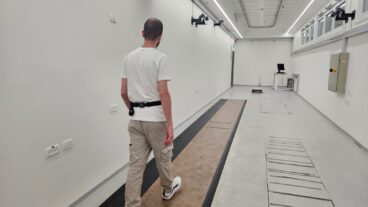A team of mathematicians from Israel is creating a statistical medical management tool that could help authorities control pandemic influenza outbreaks and save lives.
With swine flu spreading fast across the United States, and British authorities warning that the virus is at near epidemic proportions in certain parts of the country, a team of Israeli mathematicians is developing a statistical management tool which it believes could help save time and lives during flu outbreaks.
The tool, which is being developed by researchers from Tel Aviv University (TAU), can provide guidance on anything from who should be the first to receive antiviral medications, to when airports, schools and highways should be closed, and whether people should stay home from work or school.
“Our model provides guidance for complex decisions such as whether to close airports, schools and travel routes, and how to distribute Tamiflu,” says Prof. Lewi Stone, project leader of the team of mathematicians from the “Department of Life Sciences “ (Department of Life Sciences). “It could be applied to very small populations as well as populations as large as six to 10 million people and more,” he continues.
Stone and his team created their model by accessing information from an Israeli database – the most extensive in the world dealing with influenza outbreaks.
A goldmine of data
“We’ve accessed a veritable goldmine of data, collected over 10 years in Israel by a large network of hospitals and medical clinics,” says Stone. “It gives us a country-wide picture of what a seasonal flu is like and how much worse it would be if there was a swine flu pandemic.”
According to Stone, at the start of the outbreak in the US two American teams tried to predict how swine flu would develop and what the ramifications would be, but with limited success.
The Israeli team believes that its statistical management tool – a set of modeling tools that are modular in design – will be more successful, not only because of the impressive data it has at its fingertips, but also because of the modular way its model is conceived.
“Based on our study of influenza outbreaks in Israel we can estimate the rate at which the virus spreads in towns with a very young population,” says Dr. Amit Huppert of the Gertner Institute at Israel’s Tel Hashomer Hospital, who is collaborating on the research. “These communities are especially at risk. Communities in the US with a high population of children can be advised to stock up on anti-virals.”
“It’s taken a lot of work to remove the ‘noise’ from the data set in a careful way,” says Stone. Some doctors misclassified other respiratory illnesses as the flu, or contributed to other doctors’ reporting errors.
The TAU researchers also took into account that swine flu will attack more people than an annual seasonal flu would, because most people have only limited immunity to the new H1N1 swine flu.
The worst is still to come
These factors are worked into the model so that communities, hospitals and bodies like the United Nations or the Center for Disease Control can make better planning decisions.
Stone, a world expert in managing childhood epidemics like measles and mumps, believes that the worst of swine flu is yet to come.
“The pandemic, if it’s like the previous one, will come in waves,” he explains. “The first wave is the weaker one and rather wimpy. It’s not very dangerous. We still have to brace ourselves for the worst.”
The Tel Aviv University team is funded by Epiwork, a European Union project, and hopes to have a commercial version of its model available in three years.
The new Tel Aviv University model might also be used to understand and predict the outcome of bio-terror attacks, to contribute to preparedness and response in the event that such a catastrophic occurrence should take place.












